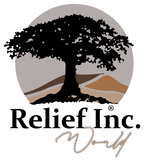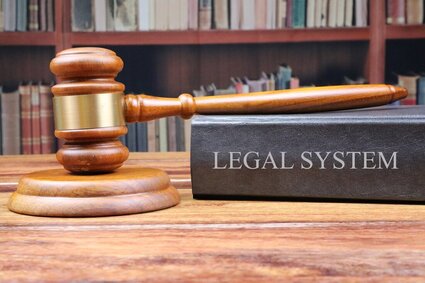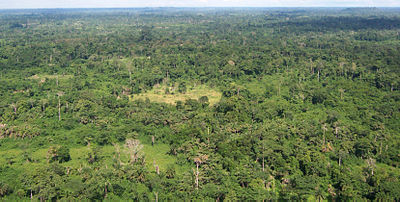Liberia was founded by American slaves in 1847
- Country Name: Republic of Liberia
- Capital: Monrovia
- Independence: July 26, 1847
- Government Type: Republic (Legislative, Executive & Judicial Branch)
Legal System
Dual system of statutory law based on Anglo-American common law for the modern sector, and customary law based on unwritten tribal practices, for the indigenous sector.
The Liberian Flag
The Liberia’s national flag is called “LONE STAR”. The eleven horizontal stripes represent the eleven signers of the declaration of independence, and the constitution of the Republic of Liberia; the blue field symbolizes the continent of Africa; the five pointed white star depicts Liberia as the first “independent republic” on the continent of Africa; the red color designates “valor”, the white, “purity”; and the blue, “fidelity”. Although these representations are uniquely Liberian, the flag itself is a replica of “Old Glory”, the national flag of the United States.
The American Colonization Society: The Founder of Current Day Liberia
The American Colonization Society, organized on Dec, 1816-Jan. 1817, at Washington, D.C., to transport free blacks from the United States, and settle them in Africa. The freeing of many slaves, principally by idealists, created a serious problem. No sound provisions were made for establishing the freed slaves in society, on an equal basis with white Americans, anywhere in the United States. Robert Finley, principal founder of the colonization society, found much support among prominent men, notably Henry Clay.
Money was raised, with some indirect help from the federal government, when (1819) Congress appropriated $100,000 to return African blacks that were illegally brought to the United States. In 1821, an agent, Eli Ayers, and Lt. R.F. Stockton of the U.S. Navy, purchased land in Africa, where, subsequently, Jehudi Ashmun, and Ralph R. Gurley laid the foundations of Liberia. More than 11,000 blacks were transported to Liberia before 1860.
From 1865, until its dissolution in 1912, the society was a sort of trustee for Liberia
.Beginning in 1989, Liberia was plagued by years of civil unrest. In 1987, Charles Taylor, and his National Patriotic Party (NPP), won the elections. The years of civil turmoil have been very disruptive to Liberia’s growth, and the country was faced with the challenging task of rebuilding societal, and economic structures ravaged by the war.
After a 14 ½ years of civil war, Liberia held the presidential election in October 2005. Harvard-educated, Mrs. Ellen Johnson –Sirleaf, was elected Liberia’s 23rd president in a runoff election with Mr. George Weah, an international soccer star. The United Nations Mission in Liberia (UNMIL), which maintains a strong presence throughout the country with over 15,000 troops, completed a disarmament program for former combatants in late 2004, but the security situation is still volatile, and the process of rebuilding the social, and economic structure remains sluggish.
Money was raised, with some indirect help from the federal government, when (1819) Congress appropriated $100,000 to return African blacks that were illegally brought to the United States. In 1821, an agent, Eli Ayers, and Lt. R.F. Stockton of the U.S. Navy, purchased land in Africa, where, subsequently, Jehudi Ashmun, and Ralph R. Gurley laid the foundations of Liberia. More than 11,000 blacks were transported to Liberia before 1860.
From 1865, until its dissolution in 1912, the society was a sort of trustee for Liberia
.Beginning in 1989, Liberia was plagued by years of civil unrest. In 1987, Charles Taylor, and his National Patriotic Party (NPP), won the elections. The years of civil turmoil have been very disruptive to Liberia’s growth, and the country was faced with the challenging task of rebuilding societal, and economic structures ravaged by the war.
After a 14 ½ years of civil war, Liberia held the presidential election in October 2005. Harvard-educated, Mrs. Ellen Johnson –Sirleaf, was elected Liberia’s 23rd president in a runoff election with Mr. George Weah, an international soccer star. The United Nations Mission in Liberia (UNMIL), which maintains a strong presence throughout the country with over 15,000 troops, completed a disarmament program for former combatants in late 2004, but the security situation is still volatile, and the process of rebuilding the social, and economic structure remains sluggish.
Terrain
Mostly flat, with rolling coastal plains, rising to rolling plateaus, and low mountains in the northeast.
Lowest point: Atlantic Ocean 0 m
Highest point: Mount Wuteve 1,380 m
NATURAL RESOURCES
Iron ore, timber, diamonds, gold, hydropower, rubber, coffee, cocoa, and cotton.
GEOGRAPHY-NOTE
Facing the Atlantic Ocean, the coastline is characterized by lagoons, mangrove swamps, and river-deposited sandbars; the inland grassy plateau supports limited agriculture.
Lowest point: Atlantic Ocean 0 m
Highest point: Mount Wuteve 1,380 m
NATURAL RESOURCES
Iron ore, timber, diamonds, gold, hydropower, rubber, coffee, cocoa, and cotton.
GEOGRAPHY-NOTE
Facing the Atlantic Ocean, the coastline is characterized by lagoons, mangrove swamps, and river-deposited sandbars; the inland grassy plateau supports limited agriculture.


